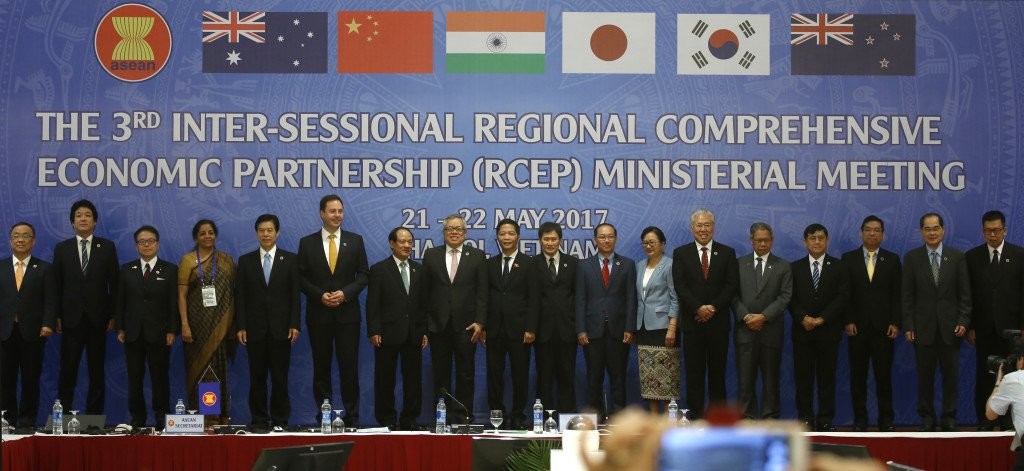Asia ministers in push for China-led free trade pact

Trade ministers of 16 countries from the Asia-Pacific region stand for a group photo during the Regional Comprehensive Economic Partnership (RCEP) ministerial meeting in Hanoi, Vietnam on Monday, May 22, 2017. The ministers gather in Hanoi to speed up finalization of the China-led trade agreement by the end of this year. AP
Asian trade ministers met Monday to hammer out the terms of a massive China-led pact that has taken centre stage as Washington pulls away from regional free trade deals in favour of bilateral agreements.
The 16-nation Regional Comprehensive Economic Partnership (RCEP) is poised to become the largest free trade agreement in the world, covering about half of its population.
It notably excludes the United States, which had been leading another regional trade pact — the Trans-Pacific Partnership (TPP) — until US President Donald Trump abruptly abandoned it in January after calling it a “job killer”.
At a meeting in Hanoi on Monday, the 19th time RCEP negotiators have met, the rhetoric in favor of free trade stood in stark contrast to Trump’s “America First” campaign speeches.
“In the context that protectionism is emerging in a number of major economies in the world, we believe that the conclusion of the RCEP Agreement negotiations will convey a clear and consistent message of the opening-up and economic integration-enhancing policy of the countries in the region,” said Vietnam’s Trade Minister Tran Tuan Anh, who was chairing the meeting.
Article continues after this advertisementApart from Beijing, the planned RCEP pact would group the 10 members of the Association of Southeast Asian Nations plus India, Japan, South Korea, Australia and New Zealand.
Article continues after this advertisementThe deal has gained attention since the US pullout from the TPP, which was billed as the world’s biggest trade pact when it was signed in February 2016 following years of negotiations.
Under then-US president Barack Obama it was sold to American allies as a unique opportunity to seize the initiative on worldwide trade — and ensure China does not get to dictate global terms of commerce.
On Sunday in Hanoi the 11 remaining TPP nations vowed to resuscitate the deal without the US. They are eager to lock in future free trade and strengthen labour and environmental rights despite the loss of the world’s number one economy.
But Beijing is now keen to use Washington’s rejection of TPP to build enthusiasm for its own deal and increase influence in the region.
RCEP is a more modest deal that prescribes lower and more limited regulatory standards.
China is also pushing a major global infrastructure and investment drive called the One Belt, One Road initiative, which aims to revive ancient land and sea trade routes.